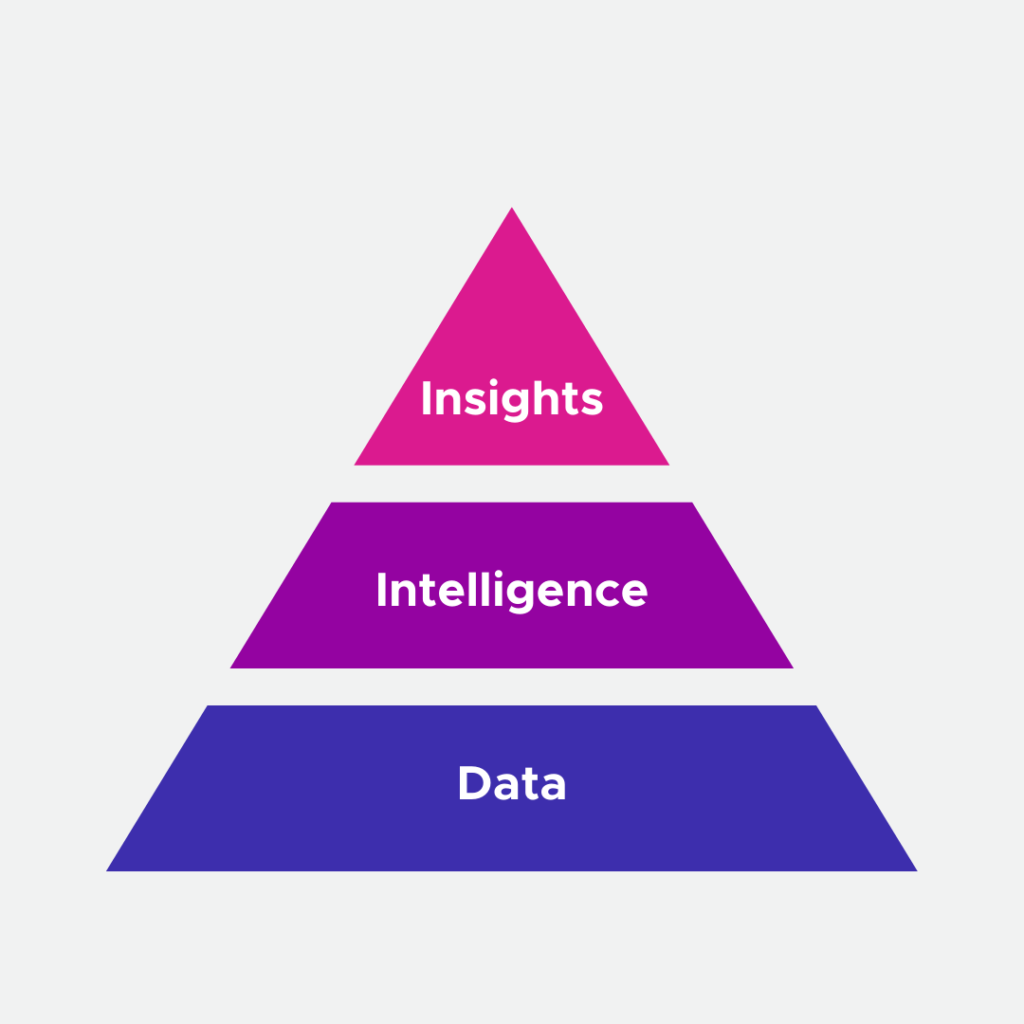22/07/21
Social Media in Healthcare: Data, Intelligence and Insights
Social media insights provide healthcare businesses the opportunity to learn about HCP and patient thoughts, behaviours and sentiments. We explore the difference between data, intelligence and insights, highlighting their impact and power.
Social media is the world’s largest focus group, providing access to the unfiltered voices of health care professionals (HCPs) and patients alike. Through sophisticated social media listening and monitoring tools, in combination with artificial intelligence (AI), businesses in Biopharma, MedTech and Biotech have the opportunity to understand the thoughts, behaviours, and sentiments of HCPs and patients. The important distinction that businesses must make now is between the use of intelligence versus insights — with the latter providing the opportunity to unlock far greater commercial value than intelligence alone.
As the use of methods to access and analyse private social media data is unethical and is in breach of several data privacy regulations, this article is focused only on the use of publicly available data.
The difference between social media data, intelligence and insights: why insights reign supreme

While many businesses and organisations already have a social media management platform that supplies social media metrics and analytics, this data is only part of the story. To understand why this is the case, we need to consider the differences between social media data, intelligence, and insights.
Social media data (i.e. posts from social media platforms such as Twitter or Instagram) is the online information collected by AI-driven social media management platforms and social media listening tools. This information can be categorised as either qualitative (e.g. keywords, phrases, emojis, or symbols used in a post) or quantitative (e.g. the number of likes the post receives). Such is the speed and power of these social media management platforms and listening tools that there could be hundreds of thousands of data points for one simple query. For example, a hypothetical query collecting tweets published in July 2021 that contain the term “#OvarianCancer” could return a result of over 10,000 tweets from a range of Twitter users. While this level of information can be helpful when aggregated, it is ultimately superficial and not particularly powerful within the context of driving commercial decisions. It only tells a very simplistic story — such as how many people liked a post.
Social media intelligence is the deeper interrogation of social media data by applying AI, such as natural language processing, to social media datasets to identify patterns, trends, and themes. This provides more sophisticated information that adds a layer of analysis to these large data sets. For example, once a data set of the term “ovarian cancer” has been gathered, intelligence may pick up the theme of “#ovariancancer” as well as “Lynch Syndrome” in the same data. Here we can see that intelligence is able to identify these themes and patterns but it doesn’t look at these patterns collectively to connect them or make meaning of them as a whole. By looking at one pattern or theme from intelligence, you aren’t being told the complete story.
While social media intelligence is important and useful for monitoring conversations, it doesn’t necessarily provide organisations and businesses with the guidance they need to make critical decisions. This is where social media insights come in.
Insights are a unique synthesis of the data compiled from social media management platforms and listening tools, the AI-driven analysis of this data and deep knowledge of the sector, business acumen and experience in strategy that not only provides context but also informs actionable recommendations. Each data point and piece of intelligence tells a story and social media insights can create the opportunity to transform the sum of these narratives into action.
Social media insights and why they are valuable
Social media insights extend beyond intelligence. Insights take each of the unique themes and patterns gained through intelligence to make sense of the data in a holistic sense — marrying these patterns with domain knowledge, expertise, and business acumen. Insights cannot be generated by AI, but rather require experts with specific context and sector knowledge to make sense of the conversation using the data and intelligence provided.
It is from here that insights can guide the formation of actionable strategies that can help businesses to better communicate with their target audiences, foster new collaborations, identify potential digital opinion leaders, or even uncover exciting new business opportunities. As such, social media insights have the power to create change — especially in healthcare. Whether the audience is the general public, HCPs, or patients, insights provide real-world evidence on how these individuals perceive and engage with a topic online. For example, we have seen social media insights from HCPs provide evidence of a potential new therapeutic area for a pre-existing product that our client had not yet considered. It was through listening to the social media conversation and the exploration of the intelligence provided by AI that this new commercial opportunity was uncovered.
Insights generated from social media listening and analysis have the potential to transform organisations and businesses from refining marketing and communications strategies to generating change in product and operational efficacy. Both HCPs and patients are waiting to be heard by businesses, and the opportunity for healthcare to utilise social media insights to do just this is now.
Written by Abbey Hargreaves.